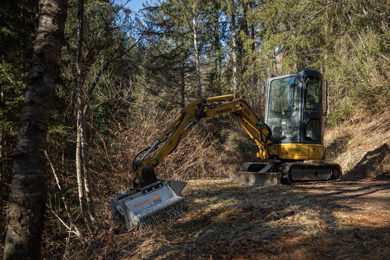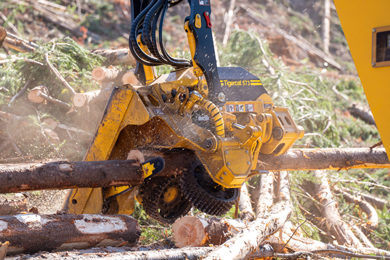The latest Research Note from the Forestry Commission provides an update on red band needle blight (RBNB), a serious disease that is increasingly affecting conifer trees in Britain’s forests. Written by Dr Anna Brown and Dr Joan Webber, scientists from the Tree Health Division of Forest Research, it presents the latest information to help foresters manage affected forests.
It provides information on the causal agents, the pathogen lifecycle, and the disease’s symptoms, distribution and impact. It also discusses the options for control and management, and considers the likely future of the disease in Britain.
Red band needle blight is caused by the fungus Dothistroma septosporum, which is a listed quarantine organism that causes economically important disease on a number of coniferous tree species, and particularly pines. The disease leads to premature needle defoliation, which results in a loss of timber yield and, in severe cases, tree mortality.
The disease has a world-wide distribution, but until recently it was mostly of concern in the Southern Hemisphere. However, over the past 10 to 15 years there has been an increase in the severity and geographical range of the disease, particularly in the Northern Hemisphere. Its incidence has increased dramatically in Britain since the late 1990s, particularly on Corsican pine, and recently there have also been reports of the pathogen causing damage to lodgepole pine and Scots pine.
Corsican pine has proved so susceptible to RBNB and the impact so severe that there is now a five-year moratorium on planting this species on Forestry Commission land. The reasons for the disease’s increased incidence are unclear, but could be due to increased rainfall in spring and summer coupled with a trend towards warmer springs, optimising conditions for spore dispersal and infection. Such conditions might become more prevalent in Britain over the next 20 years if current trends in climate change continue. Disease management in Britain is currently focused on silvicultural measures to reduce inoculum loads and make the microclimate less favourable, as well as the use of alternative, less-susceptible species in future rotations.






